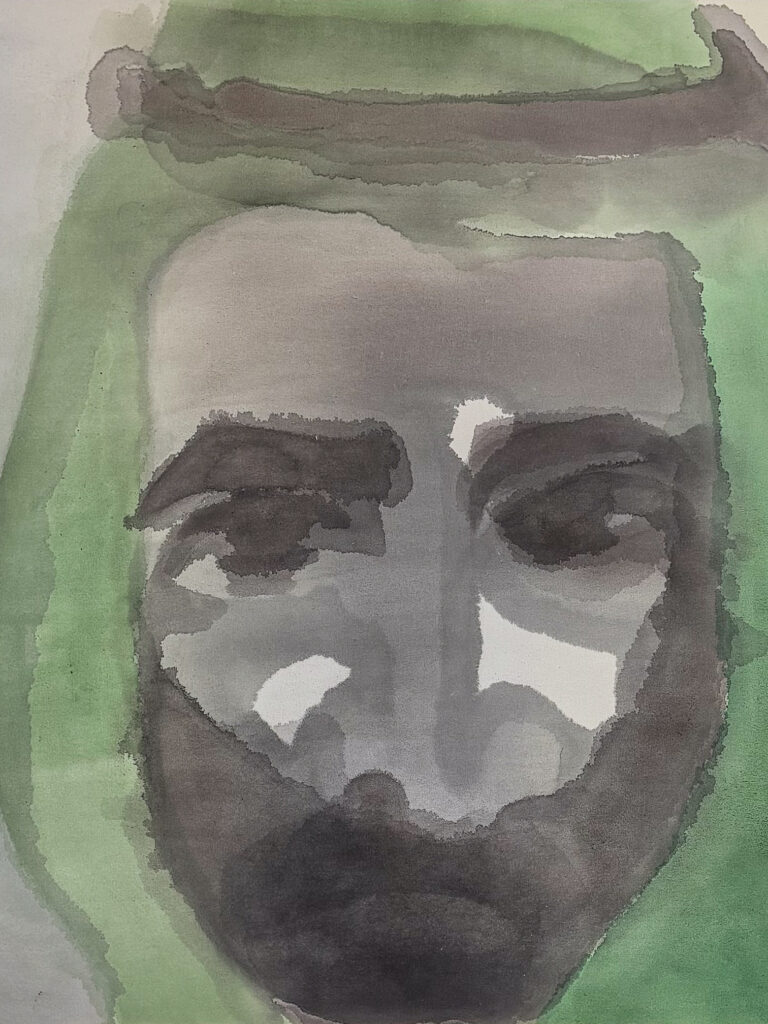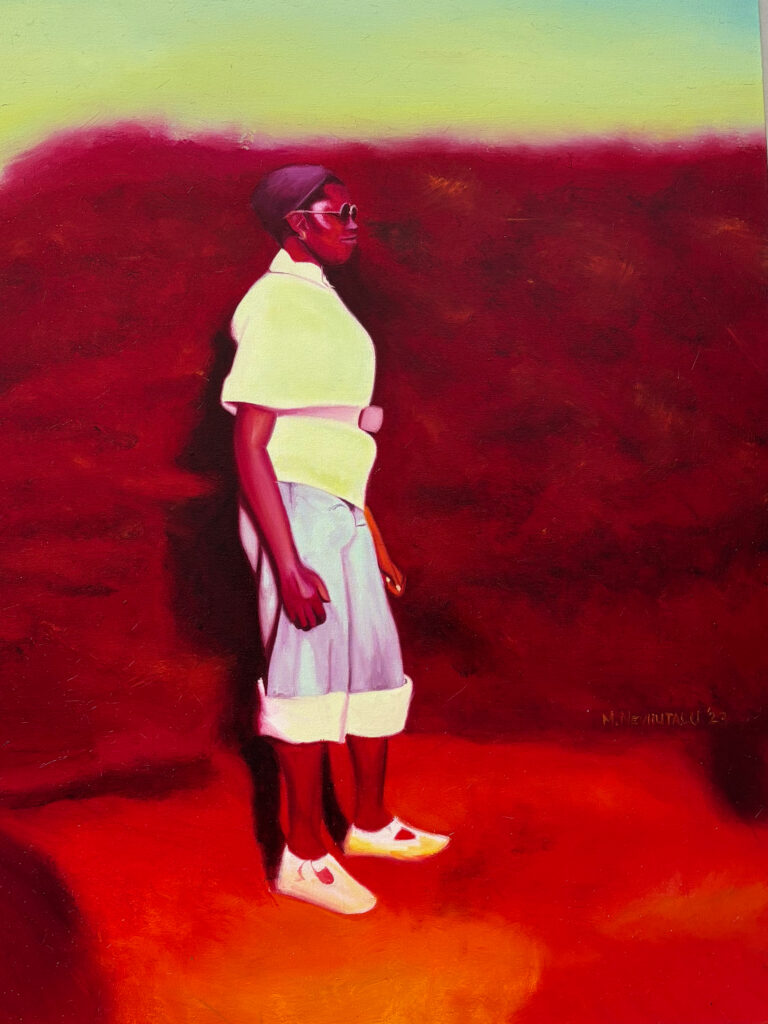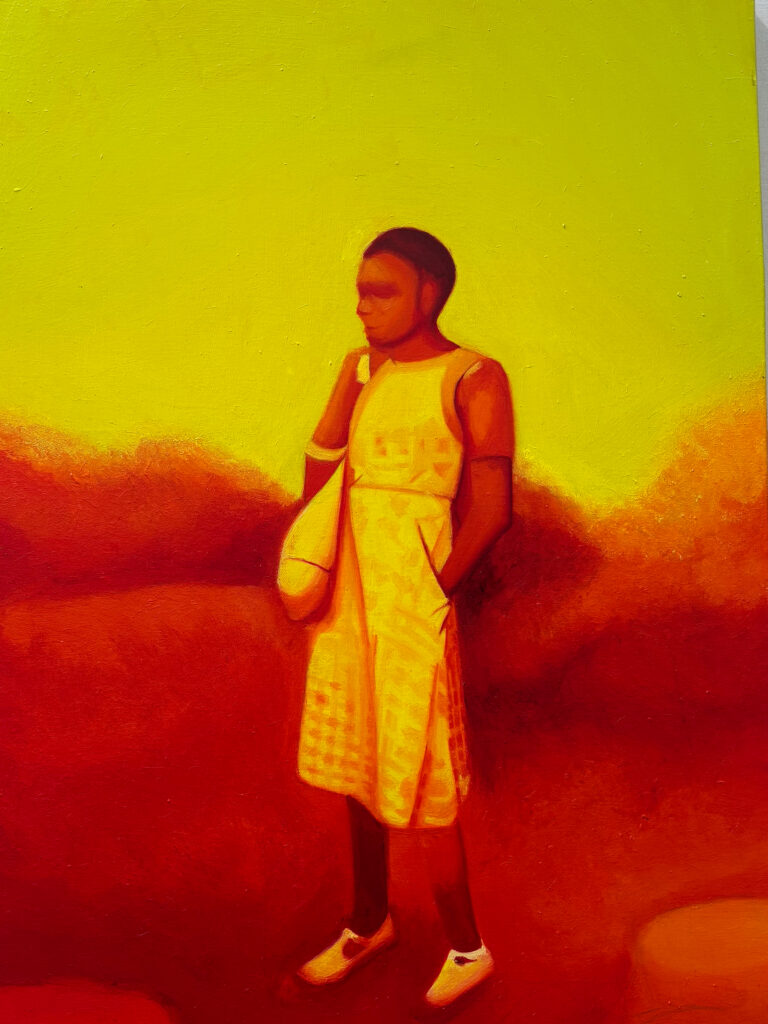Emerging Artists Rewrite the Rulebook at Art Paris 2025
Risk-taking drives the Promises section at Art Paris Fair. Kuwait’s Razan AlSarraf dissolves sheikhs’ faces while her compatriot Raya Kassisieh traps a screaming head in cardboard. Brazilian artist Felipe Rezende finds emotion in truck tarps, while South African artists reject documentary traditions for personal expression. The question remains: does giving emerging artists their own section challenge hierarchy or reinforce it?
—
Art Paris has once again transformed the Grand Palais into a vibrant showcase of contemporary expression this spring. While the main halls buzz with established names, it’s the Promises section that truly captures the evolving pulse of today’s art scene. Here, galleries take risks on emerging talents who approach their practice with refreshing candor and urgency.
I really would like to stop by Hunna Art Gallery from Kuwait presented two artists whose work speaks volumes about displacement and power dynamics in Arab countries, though significantly different approaches.
Razan AlSarraf’s “Sheikhs” series demands attention with its pointed political commentary. These portraits of powerful men are deliberately washed out, their identities obscured through dilution techniques that render them nearly unrecognizable. The muted gray tones, stripping away their recognizable features, evoking reflection on power structures in Arab countries.
What makes AlSarraf’s work particularly effective is its restraint. Rather than direct accusation, she employs subtlety. The faces of power literally dissolve before our eyes. This raises questions about patriarchal governance structures without resorting to obvious political statements. However, I wonder if this subtlety might be lost on viewers unfamiliar with the specific power dynamics of Kuwait and neighboring states. Is the work too coded to travel effectively beyond regional audiences?
Alongside AlSarraf, Raya Kassisieh’s “Scream” presents a more visceral take on displacement. Her sculptural head, packed uncomfortably into a cardboard box amid green packing materials, transforms anxiety into physical form. The frozen cry speaks to the silencing effect of forced migration and the commodification of human experience. Kassisieh’s background in textiles clearly influences her approach to materials, bringing unexpected tactile qualities to her sculptural work.
The pairing of these two artists creates a thought-provoking dialogue about bodies, power, and movement across Arab countries—one working through erasure, the other through uncomfortable preservation.
Meanwhile Salon H’s decision to showcase Felipe Rezende demonstrates curatorial courage. Rezende’s work with discarded truck tarps and tire fragments from Brazilian streets initially appears simplistic, perhaps even crude. Yet spending time with these pieces reveals their surprising emotional depth.
Each scrap of industrial waste carries its own history. The scratches, stains and wear patterns document human movement and commercial exchange across Brazil. Rezende doesn’t merely recycle; he elevates manual labor into art while questioning consumption patterns in contemporary Brazilian society.


What distinguishes Rezende’s approach from similar material-focused practices is his restraint. The compositions don’t overwork their raw materials or force them into predetermined aesthetic categories. Instead, they allow the inherent qualities of these urban artifacts to speak for themselves. This approach feels particularly relevant as Brazil continues navigating complex economic and environmental challenges.
Promises Section presented also exciting new voices from African contemporary art continues. Its impressive rise on the global stage, with Afranova Gallery bringing forward two South African artists whose work challenges conventional approaches to memory and representation.
Mashudu Nevhutalu’s paintings immediately draw with their unnaturally vibrant palette—oranges and pinks that seem to vibrate with emotional rather than realistic intent. The deliberate softening of facial features transforms these works from portraits into emotional impressions, suggesting memory’s tendency to preserve feeling rather than exact likeness.
Nearby, Dimakatso Mathopa’s project takes a more conceptual approach to historical memory. Working with an oral history of land dispossession that lacks physical evidence, Mathopa constructs a speculative archive that’s both deeply personal and politically resonant. The work asks viewers to consider which histories get preserved in official records and which exist only through storytelling and memory.
What’s particularly striking about the African presence at Art Paris 2025 is the diversity of approaches. These aren’t artists creating work to satisfy Western expectations of “African art,” but rather practitioners deeply engaged with contemporary global conversations while remaining rooted in specific cultural contexts.
While the Promises section gives new voices, the format itself deserves critical examination. Do these curated showcases genuinely provide sustainable platforms for emerging artists, or do they risk creating a separate category that keeps newcomers at arm’s length from the main exhibition? The physical positioning of Promises within the Grand Palais layout this year suggested both visibility and separation.
The heavy emphasis on gallery representation means that truly independent artists or those working through non-commercial collectives remain largely excluded from this platform. As contemporary art continues wrestling with market pressures and institutional critique, these structural questions about who gets seen—and how—remain essential.
Art Paris 2025’s Promises section offers more than a glimpse of tomorrow’s potential stars. It provides a cross-section of urgent concerns animating contemporary practice. From environmental engagement to memory politics, from material experimentation to identity exploration, these emerging artists demonstrate that contemporary art remains a vital space for processing our complex global moment.
